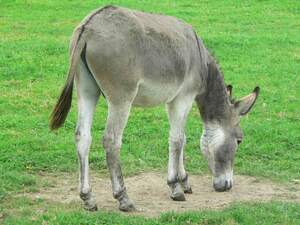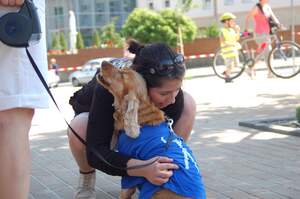

Caesarean Section Day
Caesarean Section Day commemorates the first successful Caesarean (also spelled as Cesarean) delivery or C-section, in the United States, which was made by Dr. Jesse Bennett on January 14, 1794. Although an extremely risky procedure at the time, about one in three births in the United States are now done this way. "Caesarean" references Julius Caesar, the Roman dictator who was assassinated in 44 BCE. The reference is believed to stem from Pliny the Elder, who thought Caesar's name came from one of the dictator's ancestors who had been delivered ab utero caeso—"cut from the womb." The name likely didn't refer to Caesar himself, as accounts show his mother lived, and virtually no women survived Caesarean sections until the 1500s.
Dr. Bennett performed the Caesarean section on his wife, Elizabeth, in their home, without any antiseptics or medical equipment. Dr. A. Humphrey had first attempted to deliver the baby the natural way, with forceps, but was not successful. He refused to assist Dr. Bennett with the Caesarean section because he thought it would be fatal for both the mother and the child. Indeed, survival rates in Ireland and the United Kingdom at the time were at about 15%.
Elizabeth was put on a table and given laudanum to make her sleepy. Two servants held her down during the operation, and her sister, Nancy Hawkins, held a candle to provide light. The operation was successful and Dr. Bennett stitched her up with linen thread that was designed for heavy clothing. Elizabeth lived another thirty-six years after the operation. Her baby, Maria, lived to the age of seventy-six. Dr. Bennett didn't publicize what had occurred because he didn't think people would believe him that both the baby and mother had survived.
Since Dr. Bennett didn't take credit for or share information about the operation, another doctor was recognized for performing the first Caesarean section in the United States. In 1827, Dr. John Lambert of Ohio performed a Caesarean section with modern equipment. It was reported in medical journals as the first Caesarean section.
Some time following Dr. Bennett's death in 1842, Dr. A.L. Knight, who had been a neighbor of the Bennetts as a child, talked to witnesses of the Caesarean section: Nancy Hawkins and one of the servants. He wrote the "Life and Times of Jesse Bennett, M.D., 1769-1842," which was published in Southern Historical Magazine in 1892. It was because of this account that the story of Jesse, Elizabeth, and Maria Bennett became widely known, and it is why we mark Caesarean Section Day on January 14 each year.
How to Observe Caesarean Section Day
Here are a few ways to observe the day:
- Read the "Life and Times of Jesse Bennett, M.D., 1769-1842."
- Read Cesarean Section: An American History of Risk, Technology, and Consequence.
- Visit the marker near the location where the Caesarean section took place, outside of Linville, Virginia.
- Visit the grave and home of Dr. Jesse Bennett, located in Point Pleasant, West Virginia.
- If you are pregnant and considering a Caesarean section, learn more about the operation. You could read about some pros and cons of the operation, as well as some information about if a planned Caesarean section is a good idea. Talk to your doctor for more information.





















